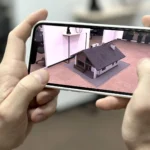Innovative uses of glass in contemporary architecture
Glass has become a hallmark of contemporary architecture, offering architects and designers unparalleled opportunities to create striking, functional, and sustainable buildings. Here’s a comprehensive exploration of the innovative uses of glass in modern architectural practices:
1. Structural Transparency and Aesthetics
Glass Facades:
- Full Transparency: Using large-scale glass panels to create visually seamless facades that maximize natural light and offer panoramic views.
- Reflective Surfaces: Incorporating reflective and tinted glass to enhance privacy, reduce solar heat gain, and complement surrounding landscapes.
2. Energy Efficiency and Sustainability
Thermal Performance:
- Low-E Coatings: Applying low-emissivity coatings to glass surfaces to improve thermal insulation and reduce energy consumption for heating and cooling.
- Double and Triple Glazing: Implementing multiple layers of glass with insulated spacers to enhance thermal efficiency and sound insulation properties.
3. Daylighting and Biophilic Design
Natural Light Integration:
- Lightwells and Skylights: Incorporating glass elements such as lightwells and skylights to distribute natural light deep into building interiors, reducing reliance on artificial lighting.
- Biophilic Elements: Enhancing occupant well-being and productivity by connecting indoor spaces with nature through views and access to daylight.
4. Structural Applications and Design Flexibility

Glass Structural Elements:
- Glass Beams and Columns: Using engineered glass components to support building loads while maintaining transparency and aesthetic appeal.
- Cantilevered Structures: Engineering cantilevered glass elements for dramatic architectural statements and spatial flexibility.
5. Artistic and Customized Applications
Artistic Expression:
- Glass Art Installations: Collaborating with artists to create bespoke glass artworks and installations that integrate with architectural spaces.
- Customized Patterns and Textures: Employing etched, frosted, or patterned glass to add visual interest and privacy without sacrificing natural light.
6. Smart Glass Technology
Dynamic Transparency:
- Electrochromic Glass: Incorporating smart glass technology that changes transparency or color in response to environmental conditions or user preferences.
- Switchable Privacy: Enhancing occupant comfort and privacy by electronically controlling opacity levels of glass partitions and windows.
7. Case Studies and Real-World Examples
Exemplary Projects:
- Apple Park, Cupertino: Featuring the largest curved glass panels in the world, creating a seamless visual experience for the company’s headquarters.
- Fondation Louis Vuitton, Paris: A glass structure designed by Frank Gehry, showcasing complex glass sails that blend art, architecture, and engineering.
8. Future Trends and Technological Advancements
Innovations in Glass:
- Nanotechnology: Exploring nanoscale coatings and materials to enhance glass properties such as self-cleaning surfaces and anti-glare functionalities.
- Interactive Surfaces: Developing interactive glass surfaces that integrate digital displays, touch-sensitive controls, and augmented reality applications.
Conclusion
Innovative uses of glass in contemporary architecture are reshaping urban skylines and interior spaces, offering sustainable, visually striking, and technologically advanced building solutions. As architects continue to push the boundaries of glass technology and design, the future of architecture promises to be defined by transparency, sustainability, and the seamless integration of indoor and outdoor environments. By leveraging the unique properties of glass, architects can create buildings that not only inspire awe but also enhance the quality of life for occupants while minimizing environmental impact.



